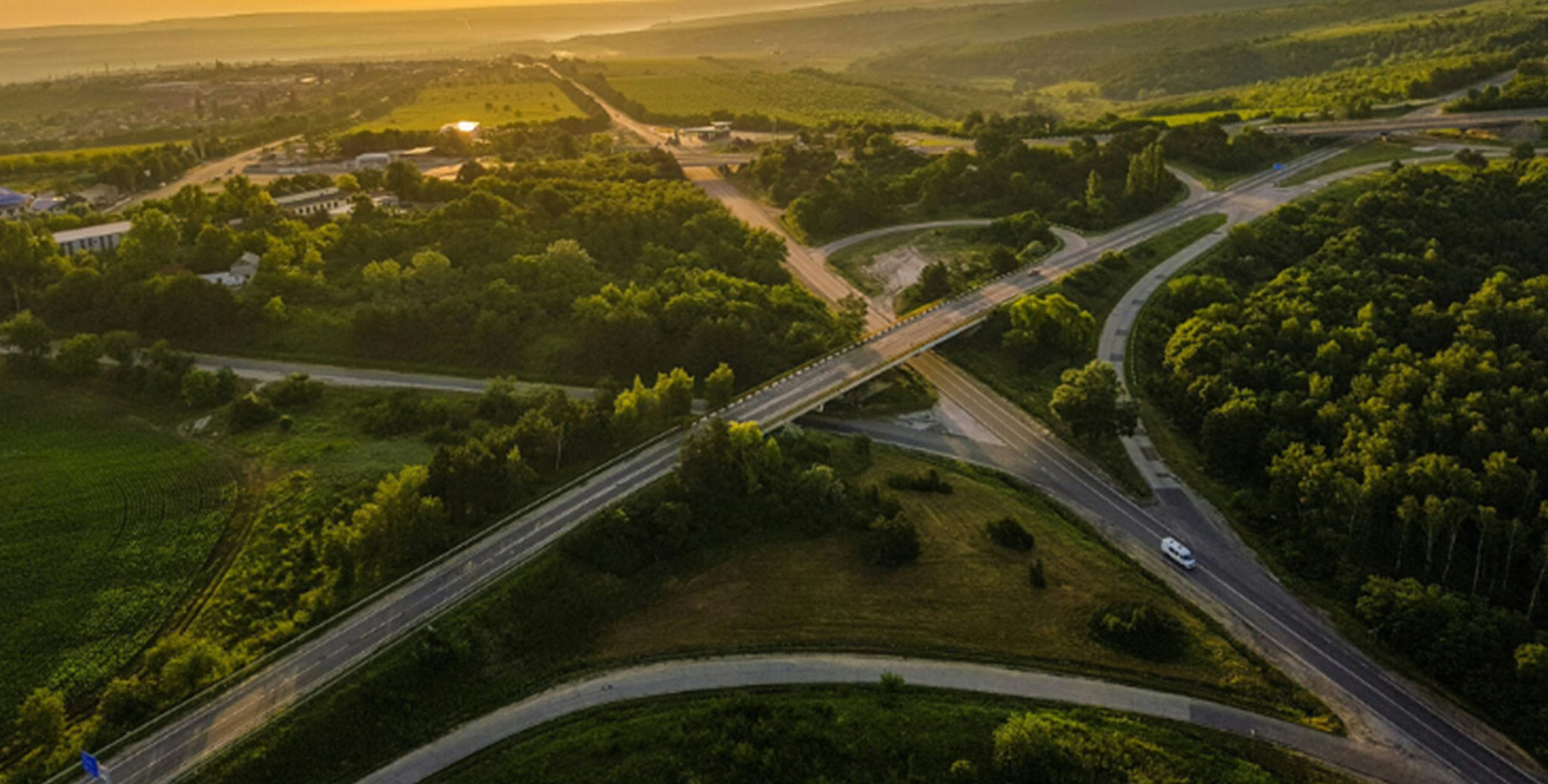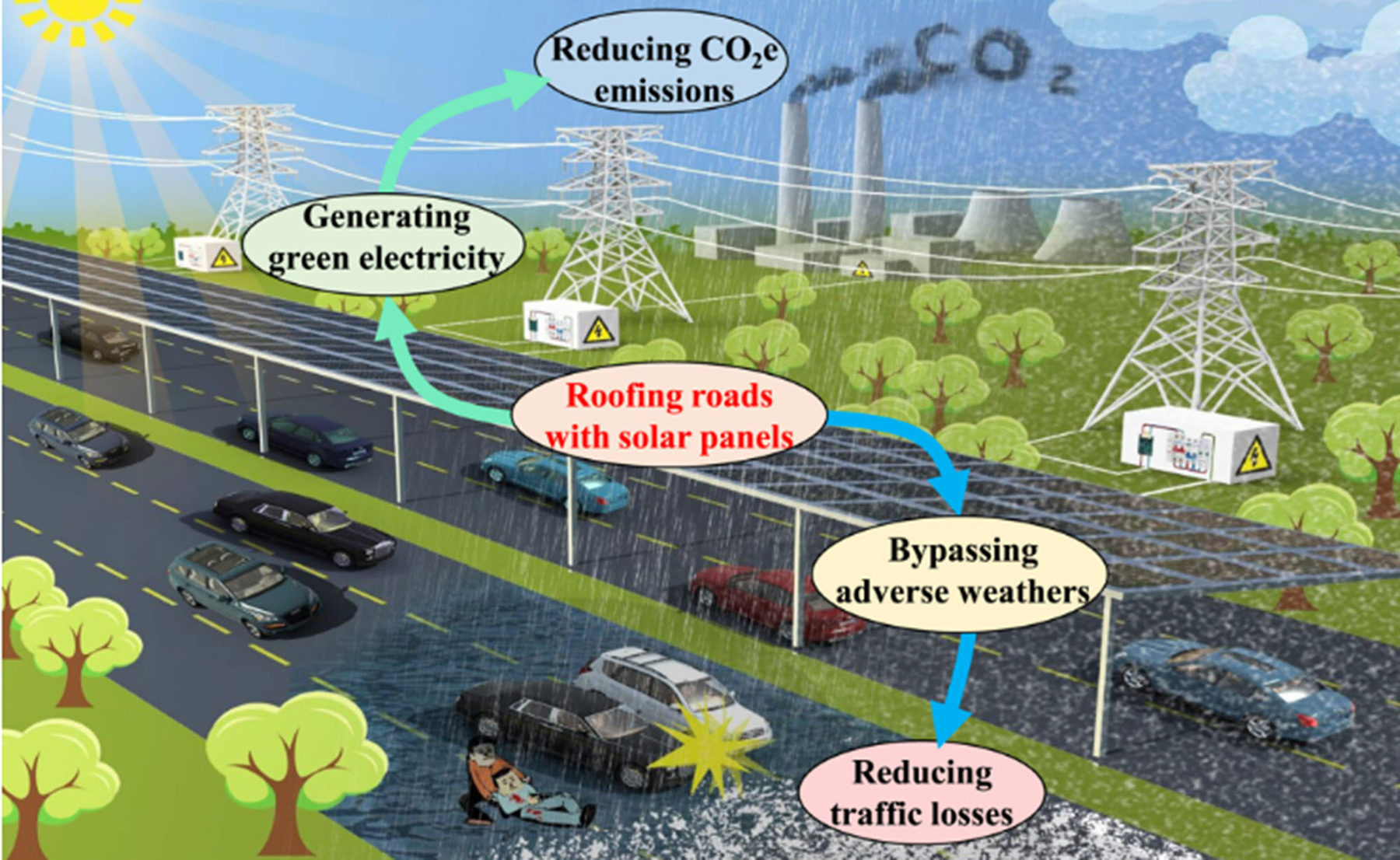
By Kayt Sukel
While taking the bus home from work one day, Hou Jiang, Ph.D., was trying to figure out how to overcome the challenge of transmitting electricity the long distances from remote photovoltaic installations to cities.
At that moment, Hou, a researcher at the Chinese Academy of Sciences in Beijing who focuses on developing innovative energy solutions to help combat climate change, realized the very highway he was riding on could offer the solution.
Further reading:
- Solar panels over California canals test possible joint-siting benefits
- Energy outlook crowns solar new king
- New Mexico research facility develops solar-powered water treatment method
“If the PV system itself could form a network, we wouldn’t have to worry about transmission issues,” he said. “Moreover, integrating PV development with existing road infrastructure wouldn’t require additional land.”
While there have been several high-profile PV road projects across the globe, most have relied on solar panels placed directly into the pavement – and have been plagued with high build and maintenance costs as well as the solar materials struggling to keep up with the wear and tear of vehicle loads. Hou said he and his colleagues believed that solar-panel-covered roofs could address those issues, not only providing cities a unique way to generate energy while reducing carbon emissions, but also minimizing traffic accidents by protecting roadways from precipitation.
“It represents a win-win solution for both energy production and infrastructure enhancement,” Hou said.
Running the numbers
To test the feasibility of the idea, Hou and colleagues, including Ling Yao, Ph.D., a remote sensing scientist at the Chinese Academy of Sciences, crunched the numbers. Given that the planet has roughly 1.9 million miles of highways, how much could solar highway roofs offer in terms of energy generation?

By putting together information about PV investment costs, operation and maintenance costs, grid emission factors, road traffic fatalities, and economic losses from traffic accidents, the group estimated that roofs using polysilicon photovoltaic panels with 250 watts of maximum power generation could generate 17.6 petawatt hours of electricity per year while reducing carbon emissions to the tune of 28%. Hou said that collecting “a wide array of complete global data” was not easy – and he was surprised not only by the immense potential for power generation but also the broader benefits.
“This could prevent approximately 150,000 road traffic fatalities and reduce the socio-economic burden by $430 billion each year,” Hou said. “I hope that infrastructure experts recognize the multifaceted value and immense value of highway PV roofs.”
Other considerations
Prasad Enjeti, Ph.D., a professor of electrical engineering at Texas A&M University and a solar power expert, said that the calculations that Hou’s team came up with were sound. Yet, he cautioned that not only would cities interested in implementing these solar-panel-covered roofs need to come up with high upfront investment costs, they would also have to consider how to build and implement the additional systems needed to collect and potentially store energy from these solar arrays.
“Solar panels produce direct current electricity, and you need to convert it to alternating current. Then you need to step it up with transformers and connect it to a high-voltage power line,” Enjeti explained. “Once you generate that electricity on the highway, you still need to think about how to distribute it. If the highway doesn’t have a power line already there, you need to build them. So, you need more than just these roofs – you need these other things and the space to build them around the highways.”
Enjeti referred to a similar idea that was piloted in 2010 in New Jersey, where solar panels were mounted on electrical poles along the highways. But, thanks to a lack of public acceptance, the project ultimately failed. Enjeti said there is also the question of what to do in parts of the world that may regularly experience extreme weather. States like Texas and Florida, for example, could see significant damage during hurricane season. The Northeast or Midwest may see problems with the roofs during heavy snow.
“You could see a situation where strong winds could dislodge the panels. That could even potentially cause an accident,” he said. “How do maintenance or emergency personnel attend to that?”
Hou agreed that there are issues that need to be addressed – including potential tunnel effects that could increase vehicle accident risks as well as damage to the roof structures in the event of accidents.
Yet, he said, he believes that good design can help mitigate these problems. He and his team plan to “delve deeper” into the technical and economic aspects of implementing PV roofs on a large scale to understand how to make them more attainable.
“We plan to explore more efficient designs for support structures, optimizing the integration of solar panels with existing infrastructure and validating our findings in real-world conditions,” Hou said. “Collaborating with industry partners and government agencies will be key in translating our research into actionable strategies.”



